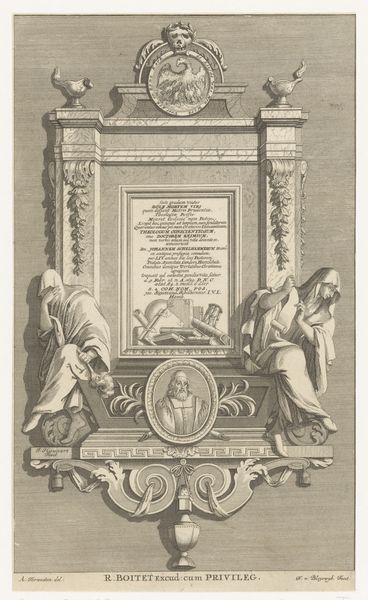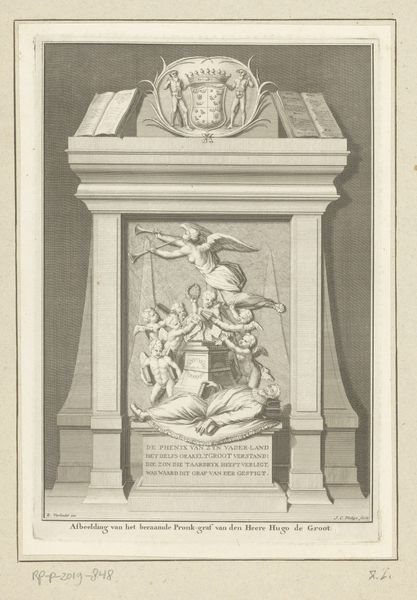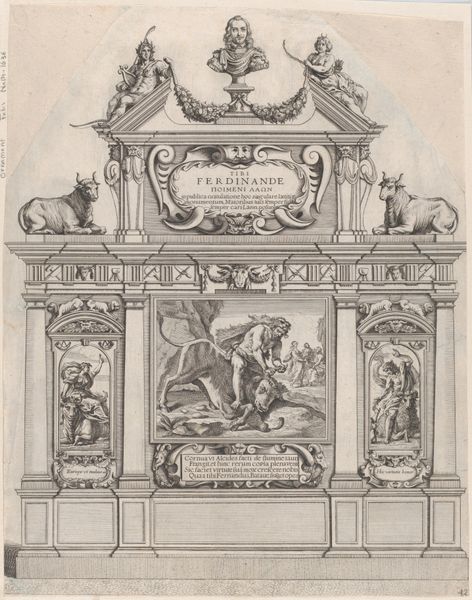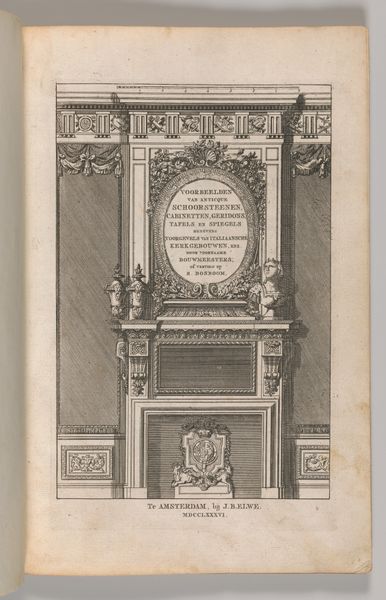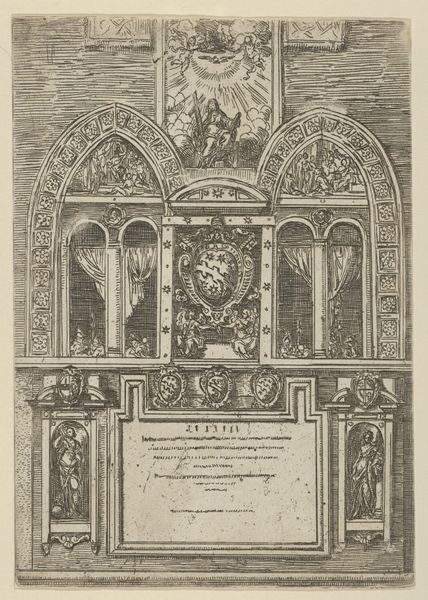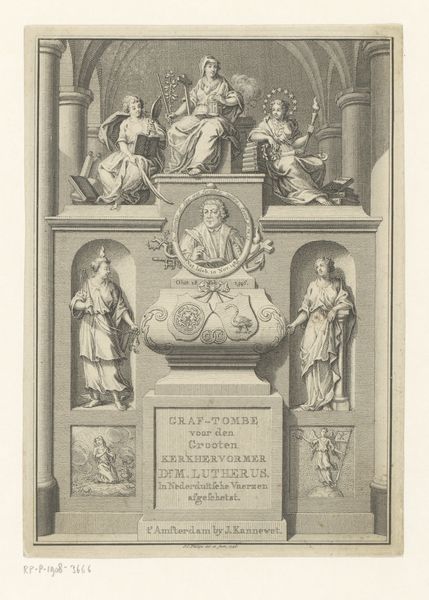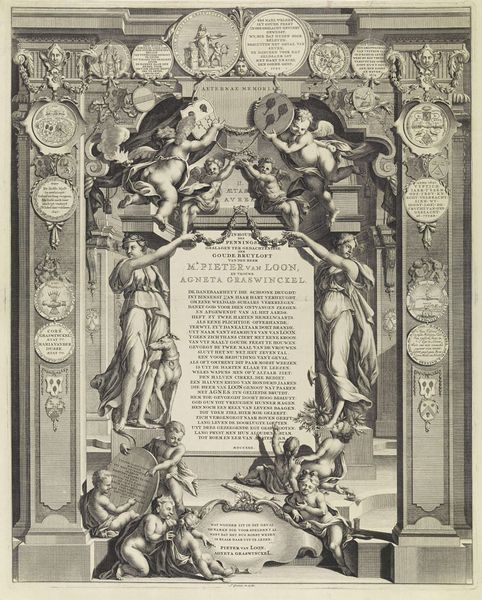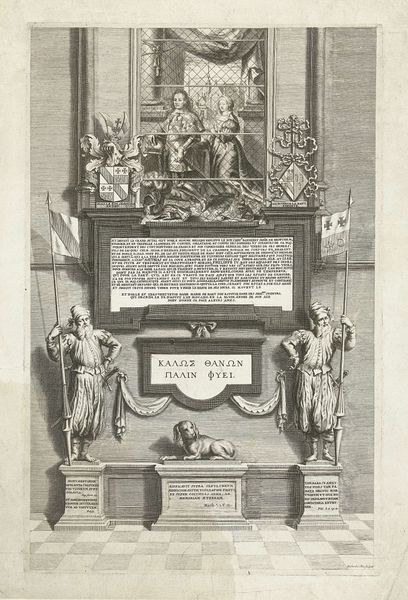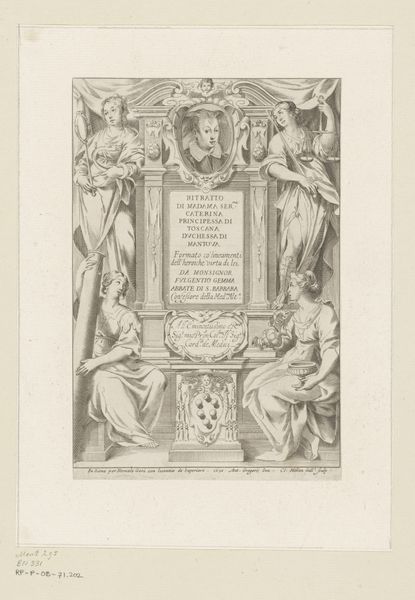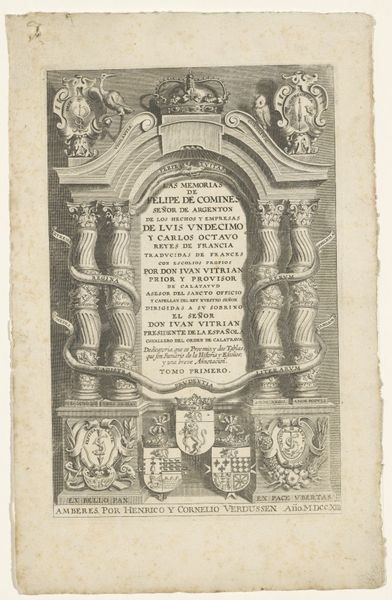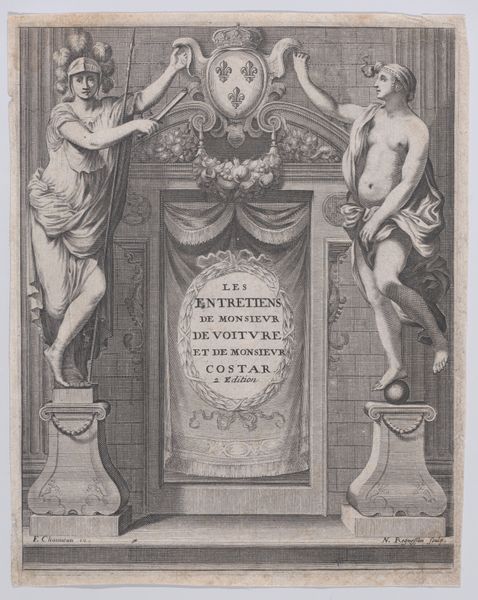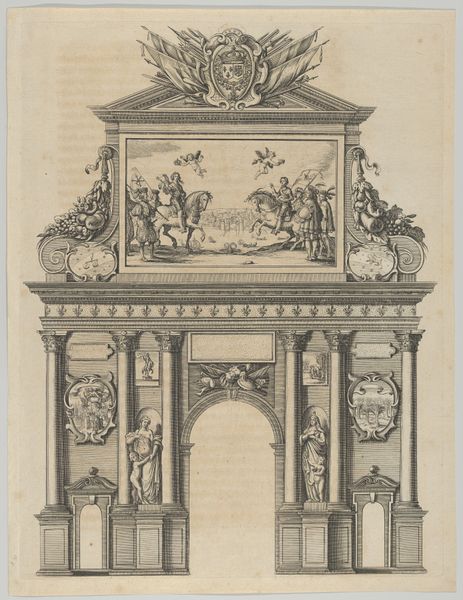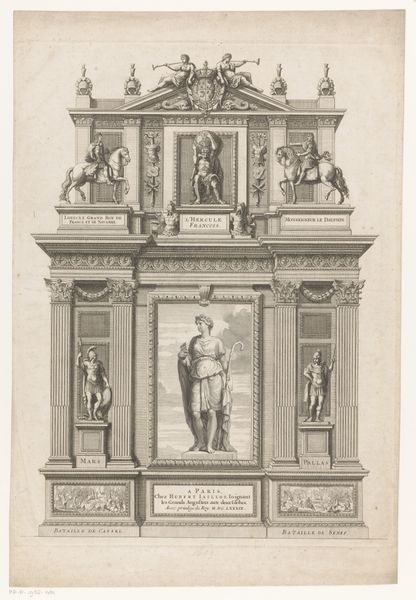
Speculum Romanae Magnificentiae: Title Page engraved within architectonic and sculptural border 1573 - 1577
0:00
0:00
drawing, print, etching, intaglio, sculpture, engraving, architecture
#
drawing
# print
#
etching
#
intaglio
#
old engraving style
#
11_renaissance
#
sculpture
#
history-painting
#
engraving
#
architecture
Dimensions: sheet: 16 15/16 x 11 5/8 in. (43 x 29.5 cm) mount: 20 11/16 x 15 1/4 in. (52.5 x 38.7 cm)
Copyright: Public Domain
Curator: Here we have "Speculum Romanae Magnificentiae: Title Page engraved within architectonic and sculptural border," an intaglio print rendered in etching and engraving by Étienne Dupérac between 1573 and 1577. Editor: It feels overwhelmingly classical. The symmetry, the severe architectural framework… it’s almost oppressively formal. The texture, though, from the etching, is incredibly delicate. Curator: Indeed. Let’s unpack that formalism. Consider the use of perspective, how Dupérac constructs depth within a two-dimensional plane, framing the central text with these weighty architectural elements and statues. Editor: Yes, and those figures flanking the text! They seem allegorical. Are they meant to represent, perhaps, ancient and modern Rome joining hands? The gesture itself is so significant within a historical and political context. Curator: Precisely! The "Speculum Romanae Magnificentiae" was a project aimed to document the splendor of Rome, both ancient ruins and contemporary structures. This title page served as an introduction, setting the tone and the objective. Note how the sculptural border merges architecture and sculpture—it frames Rome itself as both strong, enduring, but also a place of art, culture, and beauty. Editor: I am struck by the level of detail in such a comparatively small-scale work. Every line, every shadow seems carefully considered. Do you see how it mirrors Renaissance concerns of authority and heritage through the revival of Roman forms? Curator: Precisely; the composition mimics triumphal arches, common in Ancient Rome to publicly celebrate military achievement or civic virtues. This evokes, for the print's public, an invitation to witness Rome’s past greatness reborn. Even the medium is a strategic element, ensuring reproducibility and broad distribution to reinforce political and cultural ideology. Editor: What began as potentially intimidating now feels, with your perspective, both grand in scope and full of subtle historical considerations. Curator: By dissecting its structural and thematic components, it makes Rome's power felt by us still, and with this knowledge the work springs into renewed life and meaning.
Comments
No comments
Be the first to comment and join the conversation on the ultimate creative platform.
